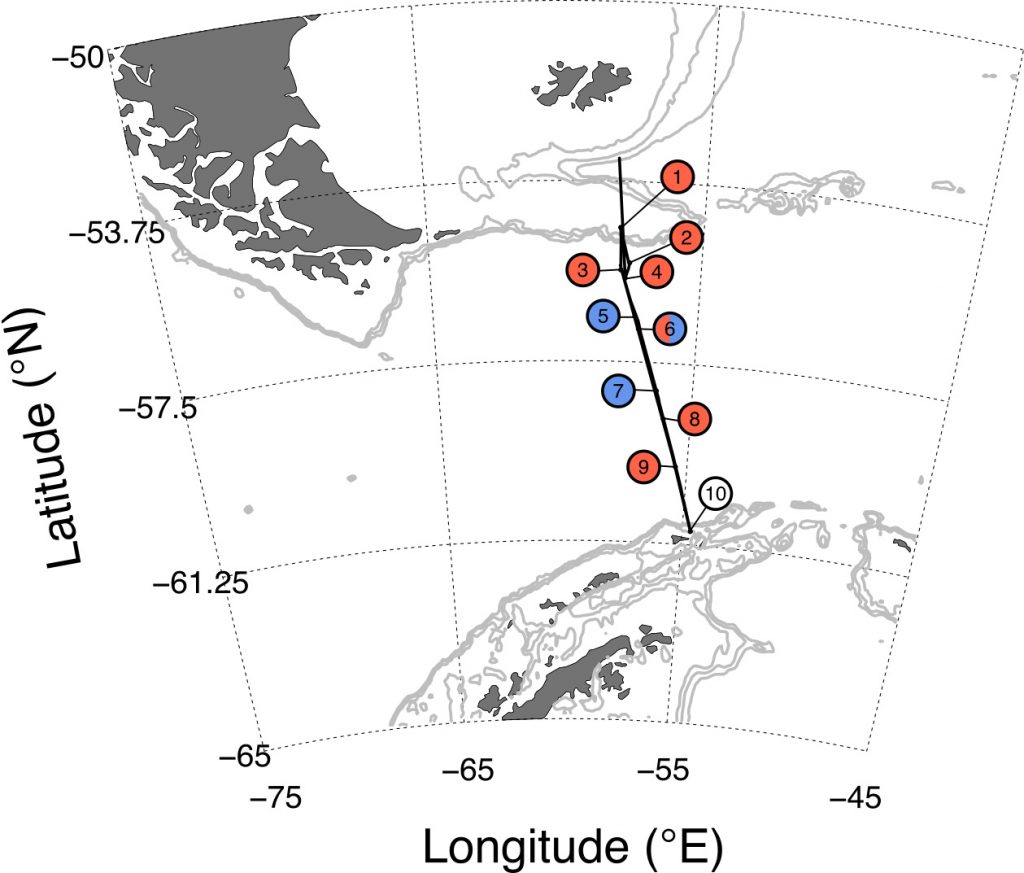Manganese: a surprising co-limiting factor of phytoplankton growth in the Southern Ocean
Browning and co-authors (2021, see reference below) conducted ten trace-metal-clean bioassay incubation experiments in austral spring on a cruise track spanning Drake Passage. The authors revealed that, in the middle of the passage, manganese (Mn) was (co-)limiting phytoplankton growth and macronutrient consumption whilst iron limitation was widespread nearer the South American and Antarctic continental shelves. Differences of the removal rates of both elements explain this distribution and fate. In addition, the surface waters of the Southern Ocean are particularly depleted in Mn since dust inputs are very low, the deep waters upwelling in this area are Mn-depleted and Mn photoreduction is reduced (missing light and organic matter). One of the main consequences of this work is that Mn should be included in ocean-climate models, more particularly to improve the accuracy of their predictions in this area.

Iron limited sites were generally found nearer to continental shelves (grey contours), where the supply of both iron and manganese is elevated but removal of iron compared to manganese is faster. In contrast, in the central part of Drake Passage, deep waters upwell to the surface that have been isolated from micronutrients inputs for long periods and are highly depleted in manganese.
Reference:
Browning, T. J., Achterberg, E. P., Engel, A., & Mawji, E. (2021). Manganese co-limitation of phytoplankton growth and major nutrient drawdown in the Southern Ocean. Nature Communications, 12(1), 884. https://doi.org/10.1038/s41467-021-21122-6
